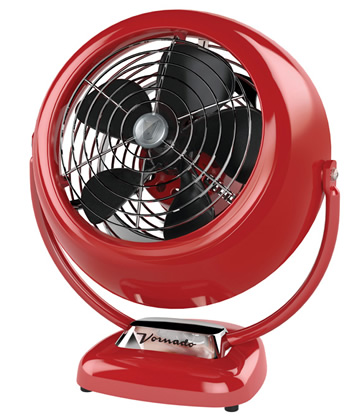Revival of the Coolest - Page 2
 |
|
|
case complete with 80-year-old newspaper clippings, work done by Odor in the 1930s for Oklahoma Agricultural and Mechanical College, and other materials, including the clincher for Cartwright: footage of the 1929 test flight in which Odor documented his vortex design.
"You can't argue with black and white footage," Cartwright says, only half tongue in cheek.
Morris alleges that at some point when Odor worked for O.A. Sutton in the 1940s, Sutton started taking credit for his grandfather's patents, further clouding the historical path. Cartwright's current belief is that Odor is the inventor of the celebrated Vornado, but Ten Eyck was apparently consulted about the fan's production in the '40s and '50s.
"His inputs were asked for and given," he concludes of Ten Eyck, who died in 2009, 22 years after Odor.
Today, the Vornado Air product that most closely replicates the classic Vornado is the new and improved VFAN. It's even safer and more efficient than its landmark predecessor, Cartwright says, with the most recent improvements being a surge-protecting fuse in the plug and even tighter grill spirals, "not letting curious fingers go where they don't need to be."
Unchanged, however, is the signature Vornado vortex created with "distinctively deep-set blades that take bigger bites of air and push it forward more forcefully."
"It's that whole-room air circulation, and how we get there is that vortex action," Cartwright says. "It's a matter of everyone in the room being comfortable versus everyone trying to get in front of the fan."
The VFAN also sports that sleek, retro look—in stainless steel, red, and the original olive green—so cool and at home in the mid-century modern living room.
For more on the VFAN, visit vornado.com/circulators/VFAN.




